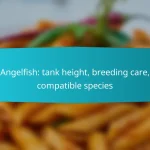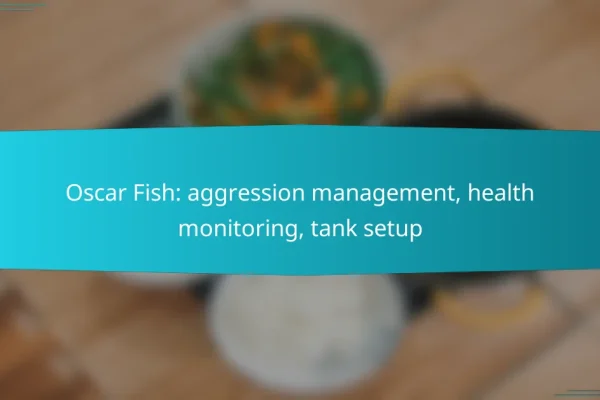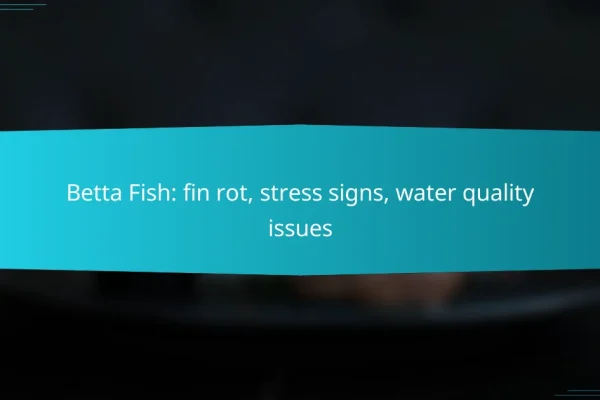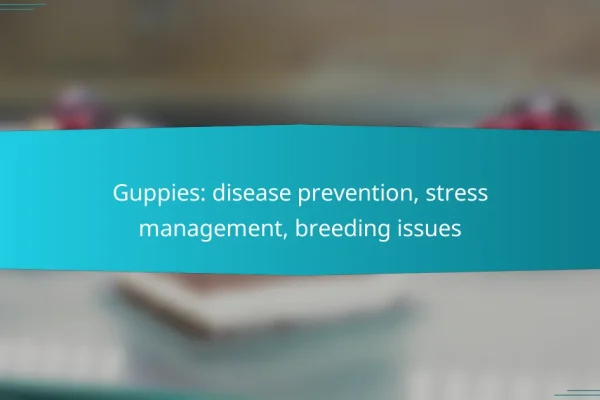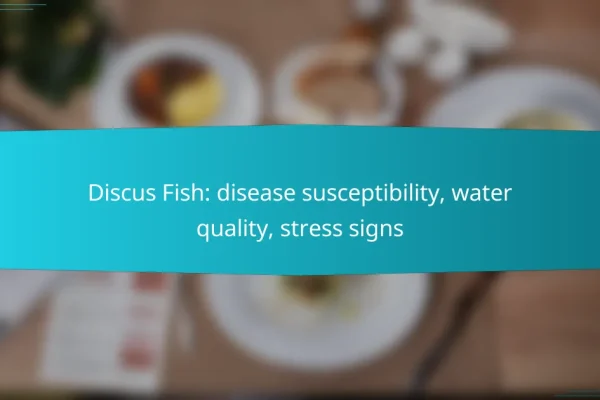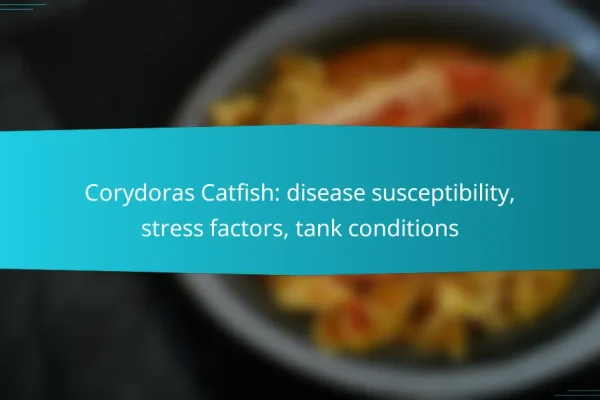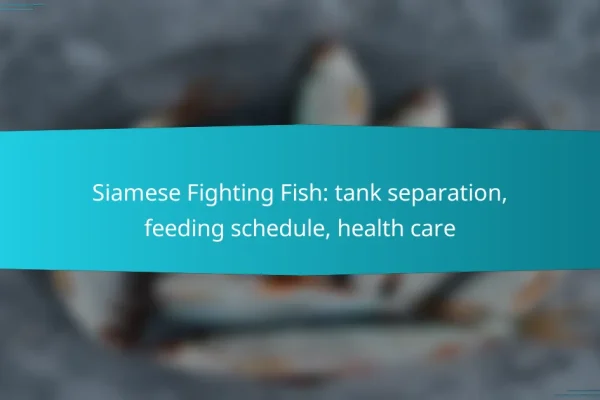What are common challenges with aquarium fish?
Common challenges with aquarium fish include maintaining water quality, ensuring compatibility among species, managing feeding practices, addressing environmental stress, and preventing diseases. Each of these factors plays a crucial role in the health and longevity of aquarium fish.
Water quality issues
Water quality is vital for the health of aquarium fish. Factors such as pH levels, ammonia, nitrite, and nitrate concentrations must be regularly monitored to prevent toxic conditions. Aim for a pH level suitable for your specific fish species, typically between 6.5 and 7.5 for many freshwater fish.
Regular water changes, ideally 10-20% weekly, can help maintain optimal conditions. Utilize water testing kits to track parameters and adjust as necessary, ensuring a stable environment for your fish.
Incompatible species
Incompatible species can lead to aggression, stress, and even death among fish. Research the temperament and habitat needs of each species before adding them to your aquarium. For example, mixing peaceful species like guppies with aggressive ones like cichlids can create conflict.
Consider grouping fish with similar size and behavior patterns. A well-planned community tank can enhance the overall health and harmony of your aquarium.
Overfeeding problems
Overfeeding is a common issue that can lead to poor water quality and health problems for fish. Fish should be fed only what they can consume in a few minutes, typically once or twice a day. Excess food decomposes and increases ammonia levels, which can be harmful.
To avoid overfeeding, use a feeding schedule and measure portions. Observing your fish’s eating habits can help you adjust the amount accordingly, ensuring they receive the right nutrition without excess waste.
Stress from environmental changes
Environmental changes, such as fluctuations in temperature or sudden shifts in water chemistry, can stress aquarium fish. Fish are sensitive to their surroundings, and even minor changes can impact their health. Maintain a stable temperature, usually between 74°F and 78°F for tropical fish, to minimize stress.
Introduce new fish gradually and acclimate them properly to prevent shock. Use a quarantine tank for new arrivals to monitor their health before adding them to the main aquarium.
Diseases and parasites
Diseases and parasites are significant threats to aquarium fish, often resulting from poor water quality or stress. Common issues include ich, fin rot, and velvet disease. Regular observation of your fish can help identify early signs of illness, such as changes in behavior or appearance.
Maintaining good water quality and a stress-free environment is key to preventing diseases. Quarantine new fish and treat any outbreaks promptly with appropriate medications to protect your aquarium’s health.
How can water quality be maintained?
Maintaining water quality is essential for the health of aquarium fish. Key practices include regular testing, using proper filtration systems, and performing routine water changes.
Regular water testing
Regular water testing helps monitor parameters like pH, ammonia, nitrite, and nitrate levels. Testing kits are widely available and can provide results in minutes, allowing you to take immediate action if levels are off.
It is advisable to test water at least once a week, especially in newly established tanks. Keeping a log of your water test results can help identify trends and potential issues over time.
Proper filtration systems
A proper filtration system is crucial for maintaining clean water. Filters help remove debris and harmful substances, ensuring a healthy environment for your fish. Choose a filter rated for your tank size to ensure adequate circulation and filtration.
Consider using a combination of mechanical, biological, and chemical filtration for optimal results. Regularly cleaning and replacing filter media as needed will enhance its effectiveness and prolong its lifespan.
Regular water changes
Performing regular water changes is one of the simplest ways to maintain water quality. Changing 10-20% of the water weekly helps dilute toxins and replenish essential minerals. This practice is particularly important in heavily stocked tanks.
When changing water, always use a dechlorinator if you are using tap water, as chlorine can be harmful to fish. Make sure the new water matches the temperature and pH of the tank to avoid shocking your fish.
What species are compatible in community tanks?
Community tanks thrive when fish species are compatible, meaning they can coexist without aggression or stress. Choosing the right combinations is essential for maintaining a healthy aquarium environment.
Guppies and neon tetras
Guppies and neon tetras are popular choices for community tanks due to their peaceful nature and vibrant colors. Both species prefer similar water conditions, such as a temperature range of 22-28°C and a pH of 6.5-7.5, making them easy to care for together.
When keeping guppies and neon tetras, ensure there is ample swimming space and hiding spots to reduce stress. A group of at least six of each species is recommended to promote natural behavior and social interaction.
Angelfish and corydoras
Angelfish can coexist with corydoras, provided the tank is spacious enough. Angelfish are semi-aggressive and may exhibit territorial behavior, so it is crucial to have a tank of at least 75 liters to accommodate their needs.
Corydoras are bottom dwellers and help keep the substrate clean, which benefits the overall tank environment. Ensure that the angelfish are not overly aggressive by monitoring their behavior, especially during feeding times.
Betta fish and shrimp
Betta fish can sometimes live with shrimp, but caution is necessary. While some bettas may ignore shrimp, others may see them as food, especially smaller varieties like cherry shrimp.
To increase the chances of compatibility, provide plenty of hiding places for the shrimp and choose larger shrimp species, such as amano shrimp. Always observe the betta’s behavior to ensure it does not become aggressive towards the shrimp.
How to prevent overfeeding in aquariums?
Preventing overfeeding in aquariums is crucial for maintaining fish health and water quality. Establishing a routine and being mindful of portion sizes can help ensure that fish receive the right amount of food without excess waste.
Feeding schedules
Creating a consistent feeding schedule is essential for preventing overfeeding. Most fish thrive on one to two feedings per day, depending on their species and size. Stick to a routine, as this helps fish anticipate feeding times and reduces the temptation to overfeed.
Consider using a timer or a feeding app to remind you when to feed your fish. This can help you maintain regular intervals and avoid skipping meals or feeding too frequently.
Portion control
Portion control is vital in preventing overfeeding. A general guideline is to provide only as much food as your fish can consume within a few minutes. This prevents leftover food from decomposing and polluting the water.
Using a small measuring spoon can help you gauge the right amount of food. Adjust portions based on the number of fish and their size, as larger fish may require more food than smaller ones.
Monitoring fish behavior
Observing fish behavior can provide insights into their feeding habits and help prevent overfeeding. Healthy fish will actively swim and eagerly consume food, while lethargic fish may indicate overfeeding or poor water quality.
Watch for uneaten food floating in the tank after feeding. If food remains after a few minutes, reduce the portion size for future feedings. Regularly checking water parameters can also help identify issues related to overfeeding.
What are the signs of stress in aquarium fish?
Signs of stress in aquarium fish can manifest in various behaviors and physical changes. Recognizing these signs early is crucial for maintaining a healthy aquatic environment.
Hiding behavior
Hiding behavior is a common indication of stress in fish. When fish frequently seek refuge in plants, decorations, or corners of the tank, it may signal discomfort or fear. This behavior can be exacerbated by aggressive tank mates or sudden changes in water conditions.
To alleviate stress, ensure that your aquarium has plenty of hiding spots and that the tank mates are compatible. Monitor interactions closely to prevent bullying and provide a peaceful environment.
Rapid gill movement
Rapid gill movement is another clear sign of stress in aquarium fish. When fish breathe quickly, it can indicate that they are struggling to get enough oxygen or are reacting to poor water quality. Elevated ammonia or nitrite levels can contribute to this issue.
Regularly test your water parameters and perform partial water changes as needed to maintain optimal conditions. If rapid gill movement persists, consider improving aeration or checking for any toxins in the water.
Loss of appetite
A loss of appetite in fish can be a significant indicator of stress. When fish refuse to eat, it may be due to environmental factors, illness, or stress from tank changes. This can lead to further health complications if not addressed promptly.
To encourage feeding, ensure the water quality is stable and consider offering a variety of foods. Observe your fish for any signs of illness and consult a veterinarian if the loss of appetite continues for more than a few days.






